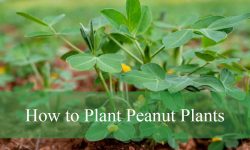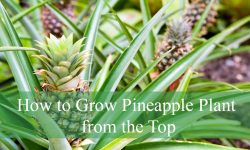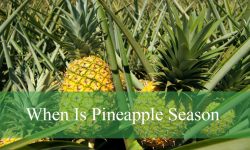Have you ever come across plants that look like lavender but don’t fit the standard profile? Well, there are several lavender look-alikes that even have medicinal and culinary benefits.
A shrub that looks like lavender is a hardy and beautiful plant that marks a bold statement in the garden. We wrote this guide to share our lavender look-alikes with vibrant foliage and flowers that help attract pollinators in the yard.
Beautiful Lavender Look-Alikes (With Pictures)
Lavender plants are native to India or the Middle East and belong to the mint family. These herbs have a sweet floral scent for easy identification. But there are some plants that look like lavender that can bring confusion. Here is the list of lavender look-alikes:
Mealycup Sage Plant
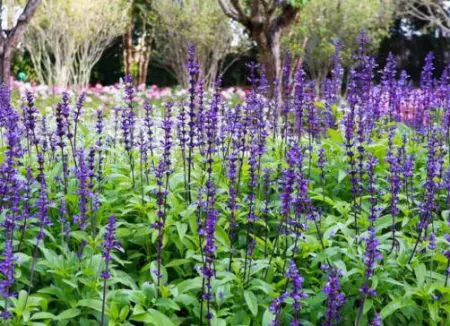
The sage plant type hails from North America and gets its name from the mealy affixed to the cups of flowers. The plant looks similar to lavender and has healing properties.
The lance-shaped leaves are smooth with serrated margins and slight elongation. The gray hint on the lower side brings out that close similarity with lavender plants.
Mealycup sage plants (Victoria blue salvia) are grown in the spring and take four months to mature. The purple flowers help attract pollinators such as butterflies, bees, and hummingbirds.
Scientific Name |
Salvia Farinacea |
Growing Rate |
Fast growing |
Bloom Time |
Early summer |
USDA Zone |
8-10 |
Mexican Bush Sage Plant
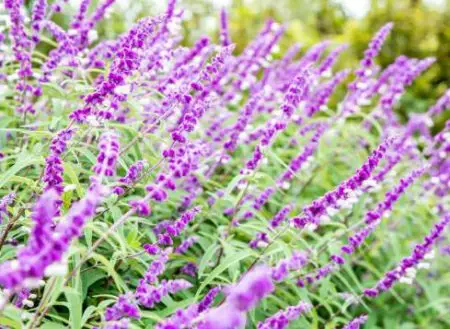
It is a fast-growing evergreen perennial herb that looks similar to the lavender plant. The herb belongs to the mint family with numerous culinary and medicinal uses.
The velvety soft-green leaves and spikes of purple–blue flowers make this perennial herb look like lavender. It has an average growth of 2-4ft tall and blooms in late summer to early fall.
Bush sage plant is native to Mexico and it is tolerant to drought. It is an ornamental plant in garden beds, borders, and containers.
Scientific Name |
Salvia Leucantha |
Growing Rate |
Fast growing |
Bloom Time |
Late summer to early fall |
USDA Zone |
8-10 |
Wisteria Plant
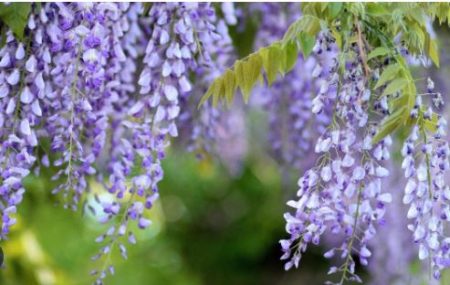
It is a flowering plant that belongs to the pea family despite having features similar to lavender plants. The perennial plant hails from China and can grow up to 30m long.
Features that make this plant resemble lavender are purple, blue, or white flowers that grow in clusters. The climbing vine provides ornamental value in the garden or yard.
Unlike the lavender plants, wisteria is quite invasive and can be challenging to control when grown in your homestead.
Scientific Name |
Wisteria Sinensis |
Growing Rate |
Slow growing |
Bloom Time |
Spring |
USDA Zone |
5-9 |
Meadow Sage Plant
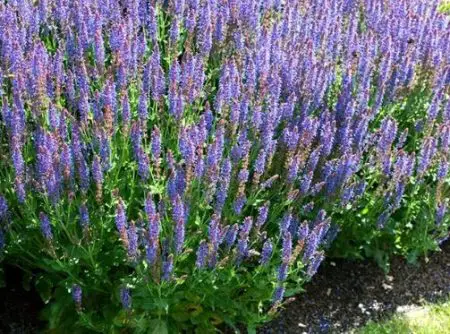
It is an herbaceous plant that belongs to the mint family and has spikes of small scented flowers in shades of purple or blue.
The lance-shaped leaves are aromatic like those of lavender plants. The herb is prized for its essential oils ideal for making perfumes, soaps, and other cosmetic products.
Meadow sage plants are grown in gardens as ornamental plants. But they have ingredients that provide a calming and relaxing effect.
Scientific Name |
Salvia Nemorosa |
Growing Rate |
Slow growing rate |
Bloom Time |
Late spring to early summer |
USDA Zone |
3-8 |
Pitcher Sage Plant
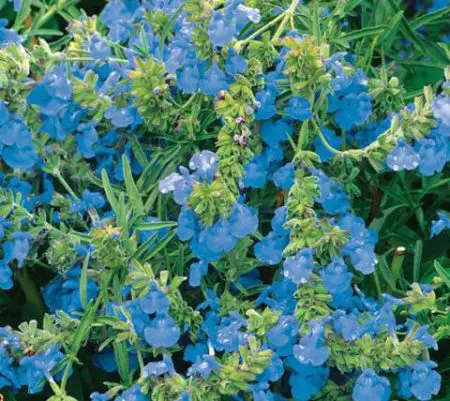
The pitcher sage plant is native to North America and grows up to 3ft tall. The erected stems generate lance-shaped silvery leaves with green on top and white beneath.
The two-lipped blue flowers make the plant resemble its lavender counterpart. The bloom helps attract bees, hummingbirds, and butterflies in the garden for pollination.
The drought-tolerant plant belongs to the same family as the lavender plant. The plant can be utilized to treat digestive issues, anxiety, and insomnia like its lavender counterpart.
Scientific Name |
Salvia Pitcheri |
Growing Rate |
Slow to moderate |
Bloom Time |
Spring to fall |
USDA Zone |
5-9 |
Basil Plant

Holy basil plant has the most resemblance to the lavender plant due to the scented spiked-mauve flowers that attract bees and other pollinators.
The purple or green leaves can be used in cooking and ceremonies of worship in Indian culture. The garden herb also deters aphids, flies, and mites from attacking your crops.
Basil plants thrive in tropical and subtropical climates. It is an excellent companion plant for fruits and other vegetables.
Scientific Name |
Ocimum tenuiflorum |
Growing Rate |
Moderate |
Bloom Time |
Late summer to early fall |
USDA Zone |
10b-11 |
Purple Salvias
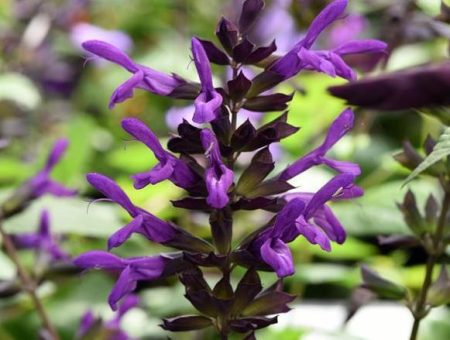
It is an herbaceous perennial plant that belongs to the mint family like the lavender plants. The common sage has gray foliage and bluish-dark purple flowers.
The herb species is native to the Mediterranean region due to its culinary and medicinal purposes. It is a compact plant with narrow grayish leaves that resembles those of lavender.
Scientific Name |
Salvia Nemerosa |
Growing Rate |
Slow growing |
Bloom Time |
Late spring |
USDA Zone |
3-8 |
Rosemary Plant
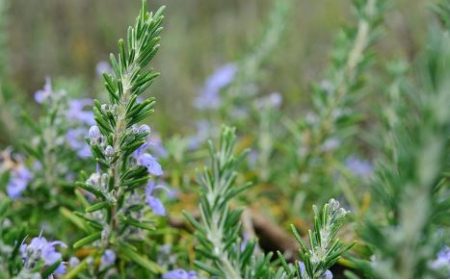
Rosemary is another hardy plant that looks like lavender with small leaves and needle-like stems. The herb produces pastel blue-purple flowers from summer through early fall.
The hardy herb hails from the Mediterranean like a lavender plant and is also called the Dew of the sea among the British. It is packed with flavors for cooking meat and vegetables.
It emits a sweet scent and can be grown in containers. We recommend protecting rosemary plants from the frigid winter temperatures.
Scientific Name |
Salvia Rosmarinus |
Growing Rate |
Slow to moderate |
Bloom Time |
Summer to fall |
USDA Zone |
8-11 |
Catnip Plant
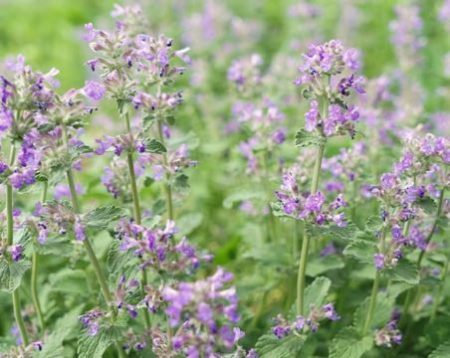
It is an excellent alternative to lavender plants native to North America. The gray-green oval leaves have sharp edges for easy distinction from their lavender counterpart.
Catnip plants produce white flowers with purple accents from late spring to the early fall. It is an excellent choice for animals due to its medicinal properties.
Scientific Name |
Nepeta Cataria |
Growing Rate |
Fast growing |
Bloom Time |
Late spring to early fall |
USDA Zone |
3-9 |
Catmint Plant
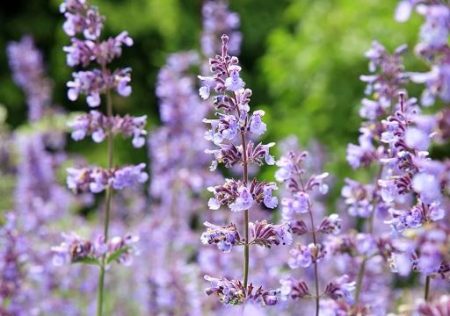
It is an herbaceous perennial plant that resembles lavender plants. The drought-tolerant plant has heart-shaped grey-green leaves and spikes of purple flowers.
The catmint plant is native to the Northwest part of Rome in Italy. The leaves and flowers from this plant are used in making tea.
The mild minty flavors have a calming effect when added to the tea. The sweet scent is also excellent for making soups and sauces.
Scientific Name |
Nepeta Mussinii |
Growing Rate |
Fast growing |
Bloom Time |
Late spring to mid-summer |
USDA Zone |
4-8 |
Hyssop Plant
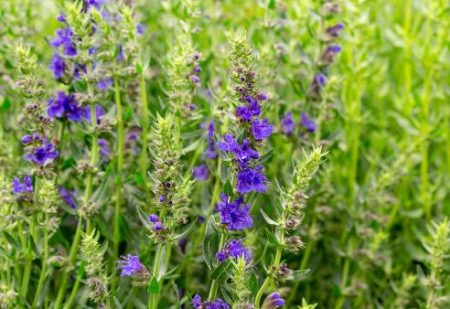
It is a perennial herb that belongs to the mint tribe like the lavender plants. It has more green leaves than lavender despite sharing numerous characteristics.
The hyssop plant generates violet-blue or tiny pink clusters of flowers in the late summer arranged on the woody stems.
The medicinal properties can be used to treat minor respiratory problems and intestinal liver diseases. Young fresh leaves can be added to stews, soups, and salads for flavors.
Scientific Name |
Hyssopus Officinalis |
Growing Rate |
Moderate |
Bloom Time |
Spring to fall |
USDA Zone |
4-9 |
Russian Sage Plant
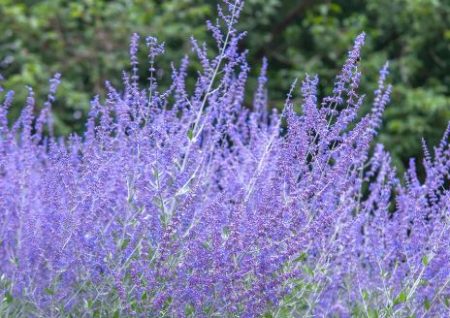
Russian sage plant is the closest herb that resembles lavender. The clump-forming perennial herb has silver-gray leaves, white stems, and tiny mauve flowers.
It is less tolerant of winter temperatures but can regrow in the spring. The sage plant type is an excellent alternative to lavender to grow in your flower bed border.
You can grow Russian sage plant in the coastal garden since it is tolerant to salty soil or conditions. The flowers can help attract pollinators to your backyard garden.
Scientific Name |
Perovskia Atriplicifolia |
Growing Rate |
Moderate |
Bloom Time |
Late summer to early fall |
USDA Zone |
5-9 |
Clary Sage Plant
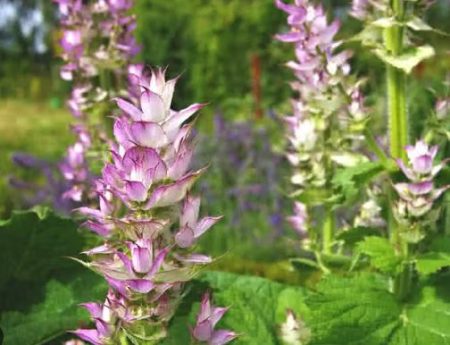
The clary sage plant belongs to the mint family like its lavender counterpart. The gray-green leaves and pink or white blooms are traits shared between these two herbs.
The flowers and leaves contain flavors ideal for cooking in tea. They thrive in well-draining soil and full sunlight exposure.
Scientific Name |
Salvia sclarea |
Growing Rate |
Fast growing |
Bloom Time |
Late spring to early summer |
USDA Zone |
5 |
Agastache Blue Fortune
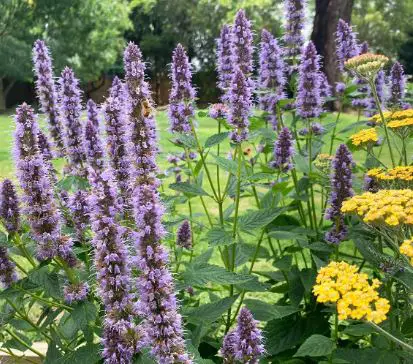
It is a European hybrid herb with power blue blooms and can thrive in almost all States in the USA. The beautiful flowers help attract pollinators such as bees and butterflies.
These plants that look like lavender will bring your garden to life in the mid-summer to fall. The large green leaves have silvery undersides and require full sun to flourish.
Scientific Name |
Agastache hybrida |
Growing Rate |
Fast growing |
Bloom Time |
Mid-summer to early fall |
USDA Zone |
6 |
Hebe Garden Beauty Blue
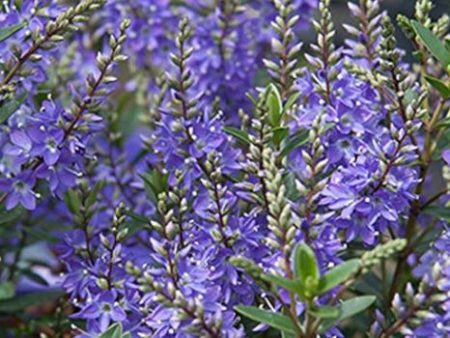
It is a dense multi-branched evergreen shrub that looks like a lavender plant. The shrub has glossy deep green leaves and clear bright blue florets.
The sweet-scented nectar helps attract good pollinators like bees and butterflies in your garden. These evergreen shrubs are more vulnerable to cold weather and dry wind.
I recommend growing your garden beauty blue plant in a well-draining and alkaline soil since the shrub does not thrive in fertile soil.
Scientific Name |
Hebe |
Growing Rate |
Fast growing |
Bloom Time |
Mid-summer to fall |
USDA Zone |
7-11 |
People Who Read This Also Read:



